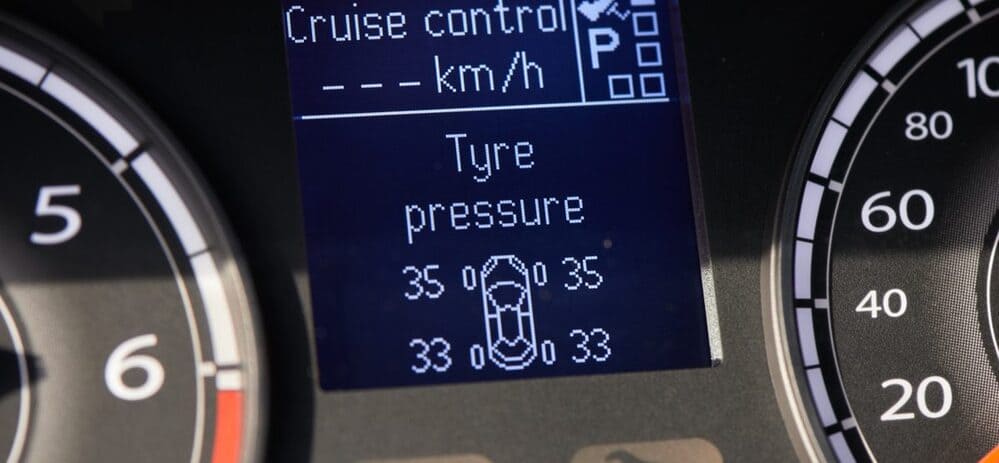
Chances are, your car or SUV has a TPMS or tire pressure monitoring system. These became mandatory on all cars built after 2006 after the Firestone tire disasters. You may have even had this little warning system light up on the dash. It usually shows what is supposed to be a very low tire with an exclamation point inside of the “tire,” but many people say that it looks more like an alien face or a horse shoe with an exclamation point.You might think that this is nothing more than a fancy “gadget” that you really don’t need, but this is a safety measure that might be right up there with seatbelts. When tires are underinflated, they are more prone to blowouts and they also affect handling, offering you a less stable ride. How do tire pressure monitoring systems work and what should you know about them? Keep reading for some interesting facts that will have you both shaking your head and saving you an unnecessary trip to the auto repair shop.
Everything You Need To Know About Your Tire Pressure Warning System
To understand this interesting little safety device, it helps to know a little bit about tire pressure in general. Tire pressure varies with the air temperature. So if you add air to your tires on a 90 degree summer day and then a cold front moves through the area that night, dropping temps into the mid-40s, the pressure can drop as much as 4 or 5 psi (pounds per square inch). This is why tire pressure is best checked in the early morning hours, before you drive the car too far. Driving causes the air in the tires to warm up, making it read higher than it is. Ideally, you would have your own tire pressure gauge (they cost about $2), and you could measure the tire pressure on your car before you drive it in the morning. For example: If the tag on your car door says that the tire pressure (cold) should be 45 psi and your morning measurement says you have 40 pounds, you know that when you drive to the gas station, you need to add 5 pounds, regardless of what the pressure gauge says at the gas station. Now that you know this little piece of information, let’s take a closer look at that tire pressure monitoring system.
1. Direct Systems Can Be A Headache
There are two systems that manufacturers use to operate their TPMS. First, let’s talk about direct tire pressure systems. These use individual sensors inside of each tire. (If you have a full- size spare tire, there could be one there as well.) These read the inside pressure, and some even analyze the temperature in relation to the tire pressure. This information is often sent wirelessly as a radio signal to the dash light.Most manufacturers use a sensor located inside the tire, but others use one externally. Each sensor has a battery that lasts about 10 years. The battery cannot be replaced, which means that once it dies, you foot the bill for a new sensor. The sensor itself can also become damaged if you hit a curb or if you have an accident. It’s not a simple as changing the tire, either, because the new sensor must be reprogrammed into the vehicle computer.
2. Indirect Systems Can Also Be A Headache
While indirect pressure systems don’t rely on pressure sensors, they do rely on a part called the wheel speed sensor. The speed sensor interprets the size and pressure of the tire based on how fast it turns. A smaller tire turns faster than a larger tire and an underinflated tire also turns faster (because it is technically smaller). This information is sent to the engine control module, which analyzes this information and decides whether or not to turn on the warning light. While this system doesn’t have some of the problems that direct systems have, drivers must give it more attention. An indirect system must be reset every time you add air to the tires. If you don’t reset it, it will see these “bigger” tires as being overinflated, triggering the light to come on.
3. Ignoring The Light Is Perhaps The Biggest Headache
This system was designed to give drivers another safety tool. NHTSA studies show that using a TPMS properly reduces the chance that your car will have an underinflated, dangerous tire by more than 50 percent. Like many things, however, this system is only as effective as the person using it. The best seatbelt in the world won’t help if you don’t buckle up, and the same is true of your TPMS. One study done in 2014 found that only 42 percent of drivers knew what that “alien face” light was on the dash, and a shockingly low 21 percent of those who did know what it meant said that they would stop and inspect the air pressure within 24 hours. While this isn’t necessarily a headache for the driver at the time, imagine the headaches to come if the tire fails and causes an accident. Most people simply aren’t aware of the facts about underinflated tires, such as:
- Even a small amount of underinflation (as little as 5 psi) can cause tire failure.
- Underinflated tires take longer to stop.
- Tires that are low on air also cause your car to use more gas.
- Tires that are underinflated flex more than one that is properly inflated, generating heat.
If The Tire Pressure Warning Light Comes On Your Dash
If you see the tire warning light, check your tire pressure in the morning and add air if necessary. Some cars will automatically turn off the light once the tire has proper pressure. Others require you to reset the system manually. Check your owner’s manual.
Courtesy of autolablibertyville










